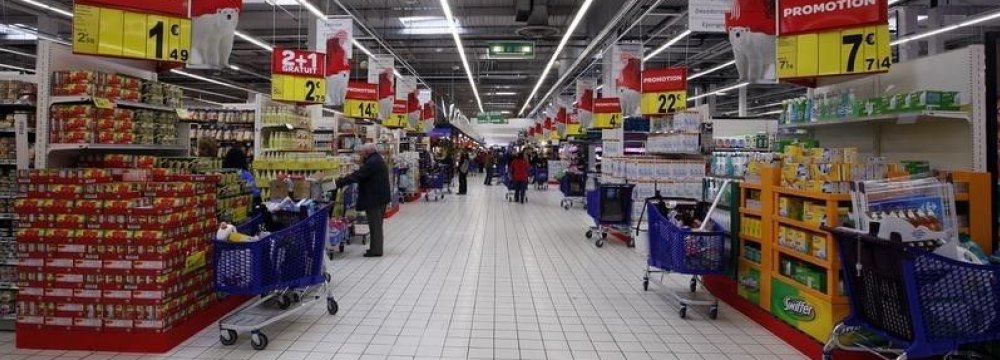The eurozone economy expanded apace in the second quarter, a sign the bloc’s upswing is becoming increasingly robust and self-sustaining.
Gross domestic product in the 19-country region rose 0.6% in the three months through June, after increasing 0.5% at the start of the year. That’s in line with the median estimate in a Bloomberg survey of economists.
Figures from economic confidence to joblessness and manufacturing output have signaled the economy was gaining steam, underpinning expectations by the European Central Bank that price pressures would eventually begin to build.
Policy makers are preparing for a debate in the autumn about the future path of quantitative easing, which has helped reduce financing costs for firms and households, thus stimulating demand.
“The ECB expects solid, broad-based growth in the period ahead, and it’s pretty likely this will happen,” said Holger Sandte, chief European analyst at Nordea Markets in Copenhagen. “They will welcome these numbers but the focus will be on core inflation—whether it picks up and how fast.”
France enjoyed its strongest continuous expansion since 2011 in the second quarter, driven by exports and investment, while Spain experienced the fastest growth since 2015, national data published last week showed. The Austrian economy also gathered pace, while Belgium’s performance weakened.
A complete country breakdown will be available on August 16, with details on GDP components due on September 5.
One of the eurozone’s main challenges was highlighted in a separate report on manufacturing. While a purchasing managers’ index pointed to broad-based economic growth, price pressures showed further signs of easing in July.
In a sign of confidence in Europe’s largest economy, unemployment in Germany continued to decline last month, data on Tuesday also showed.
The euro was 0.2% weaker against the dollar at $1.181.
ECB President Mario Draghi has expressed confidence that the solid, broad-based recovery will extend into the second half, with a healing labor market and a closing output gap fueling a sustained inflation pickup.
Economic sentiment hit a decade-high in July, with manufacturers saying they’re working at a higher capacity and selling-price expectations increasing in all sectors, according to a European Commission report last week. The pass-through to consumer inflation has so far been muted though. The rate stayed at 1.3% in July, below the ECB’s goal of below, but close to, 2%.
While policy makers see enough progress to start a debate about winding down their €2.3 trillion ($2.72 trillion) bond-buying program in September, the International Monetary Fund is urging caution.


